Richard and Diane Van Vleck Personal Pages The Home Habitat |
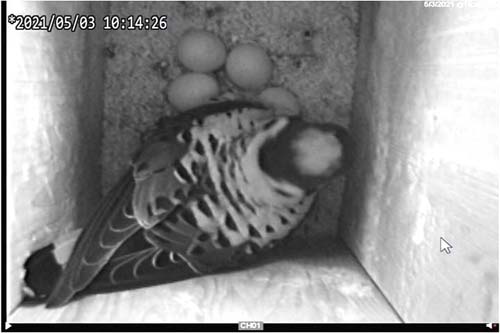
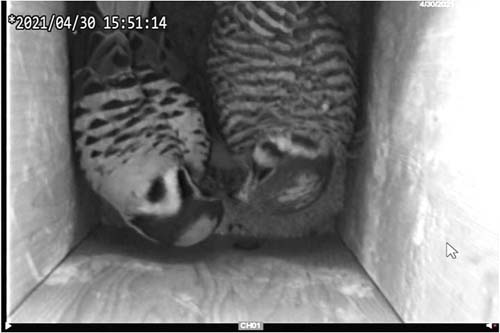
The male leaves as the female enters with prey and deftly feeds one day old nestlings.
When the flicker nest box was predated last year, I wrote that I wondered what would happen if a black rat snake entered a kestrel nest box and was confronted by an adult kestrel. Now I know.
VIDEO: DISASTER! (or dinner?)
A large black rat snake was trapped in bird netting under the porch below box H the next day and a second one seven days later. Both were just under six feet in length. A third was trapped in the same netting several weeks earlier. It seems that these fascinating creatures like old farmhouses as much as I do. At least, they stay in the basement.
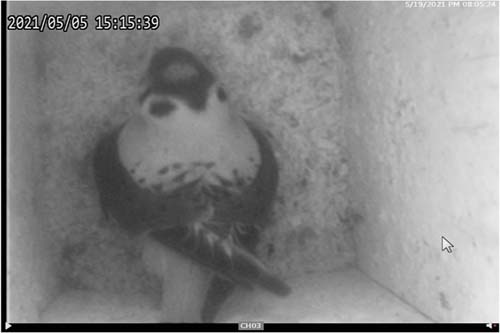
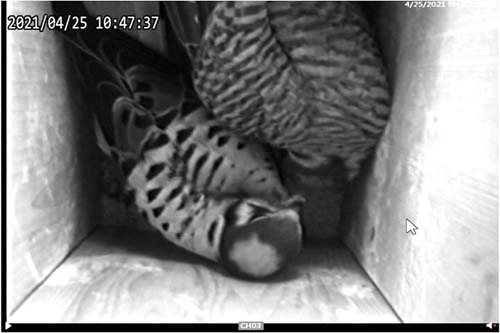
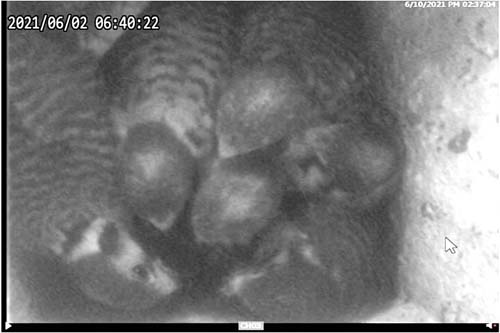
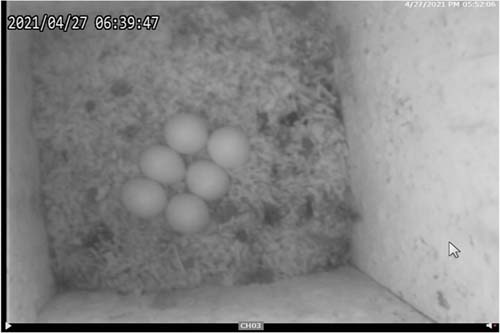
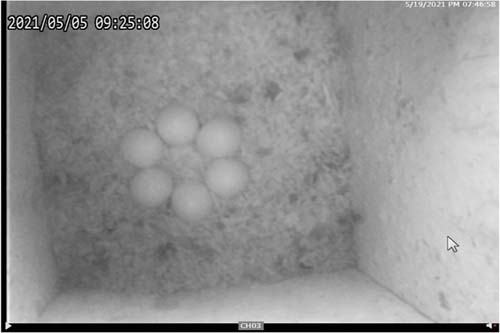
Why are the eggs so often arranged in a perfect geometric shape rather than randomly clumped together? The female usually does this, not the male. Six eggs in a circle remind me of a benzene molecule so I have named her Kekulé.
The five nestlings in Box A fledged on time and were observed in the area for several days. The box H pair did not attempt a second nesting.
| barn owl | American kestrel | purple martin | barn swallow | Eastern bluebird |
| tufted titmouse | Eastern phoebe | yellow shafted flicker | tree swallow | chimney swift |
| house wren | big brown bat | Carolina wren | brown thrasher | catbird |
| cedar waxwing | Northern mockingbird | |||
| Yellow warbler | Acadian flycatcher | |||
email richard@americanartifacts.com
©2022, Richard Van Vleck, Taneytown MD